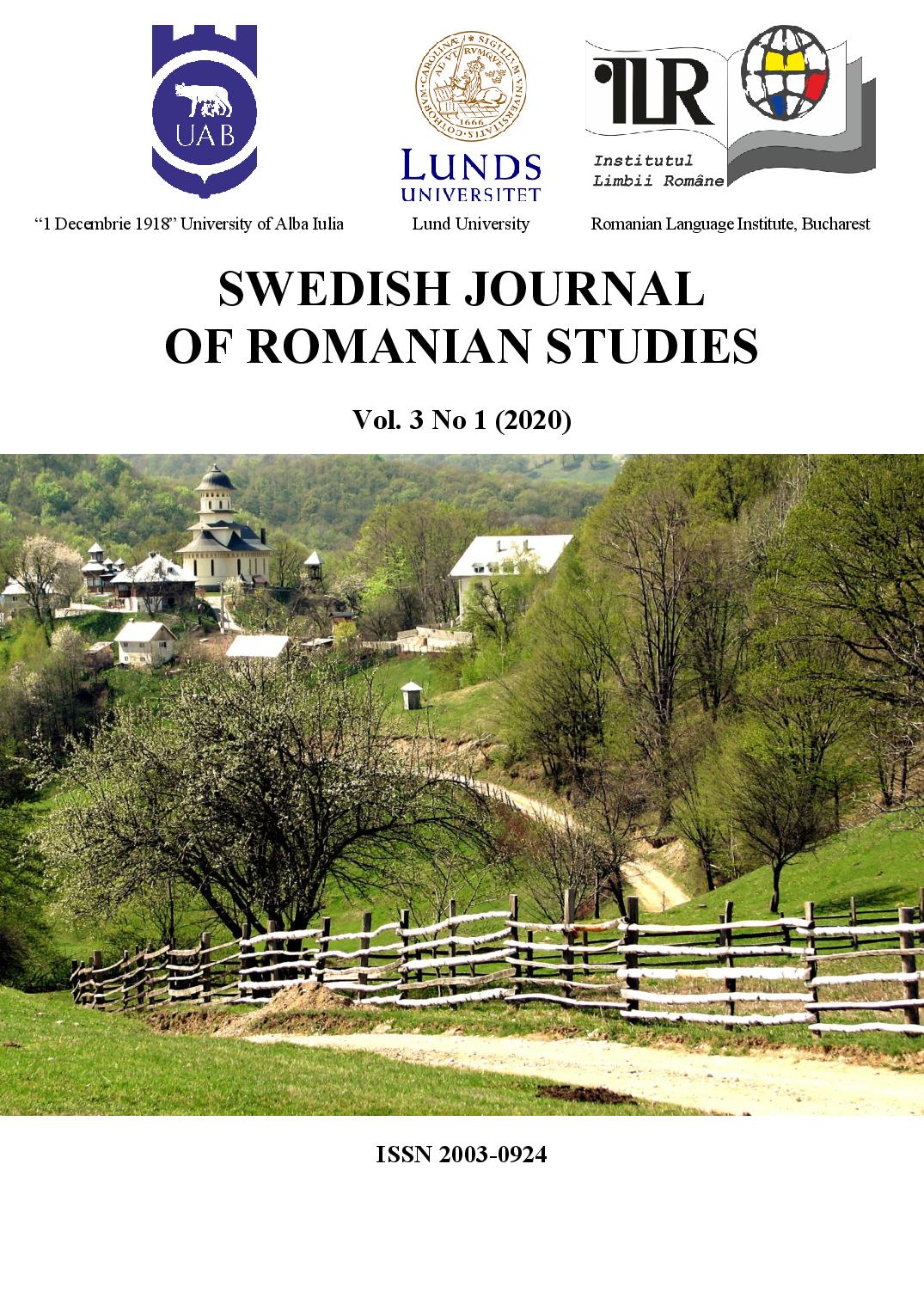Collocation and connotation in chapter “Scylla and Charybdis” of James Joyce’s Ulysses. An analytical study of the Romanian translation
DOI:
https://doi.org/10.35824/sjrs.v3i1.20460Keywords:
Interpretive act; Uncommon collocations; Adjectival collocations; Adverbial collocations; Strategies of translation.Abstract
The present article was written as part of the PhD dissertation entitled “An analysis regarding the evolution of James Joyce’s writing style in ‘Dubliners’, ‘A Portrait of the Artist as a Young Man’ and ‘Ulysses’ and the strategies of translating it into Romanian”. The research starts from the hypothesis that a perfect rendition in a different language of a literary text of this type is nothing more than a utopia. However, a translator should always intend to achieve an equilibrium between the author’s intentions, the form, the content and the target culture. In “Ulysses”, James Joyce experiments with language, abandoning the definition of sense and revolutionises the art of expressing thoughts through words. The current work will concentrate on the thorough analysis of adjectival and adverbial collocations conceptualized in the ninth chapter of “Ulysses”. Our purpose is to investigate how Mircea Ivănescu’s Romanian translation deals with collocations and especially with those that typically represent Joyce’s authorial style. Mircea Ivănescu (1931-2011) is a Romanian poet and the sole translator who accomplished the difficult task of translating the entire novel, although there had been various attempts at translating only chapters of it. It is an approved work of translation, having received both praise and critical appreciation. After more than three decades from this chapter’s translation, our research aims for a further exposition of the similarities and distinctions between the source language text and the target language translation.
References
Academia Română, Institutul de lingvistică “Iorgu Iordan”. (1998). DEX. Dicționarul explicativ al limbii române/ Explanatory dictionary of Romanian language (2nd ed.). București: Editura Univers Enciclopedic Gold.
Baker, M. (2018). In other words: A coursebook on translation (3d ed.). London/New York: Routledge Taylor and Francis Group. (Original work published 1992).
Barnbrook, G., Mason, O., & Krishnamurthy, R. (2013). Collocation applications and implications. Hampshire: Palgrave Macmillan.
Benson, M., Benson, E., Ilson, R. (2010). The BBI combinatory dictionary of English: Your guide to collocations and grammar (3rd ed. revised by R. Ilson). Amsterdam: John Benjamins Publishing.
Blamires, H. (1996). The new Bloomsday book: A guide through Ulysses (3rd Ed.). London: Routledge. (Original work published 1966)
Chesterman, A. (1997). Memes of translation: The spread of ideas in translation theory. Amsterdam/Philadelphia: John Benjamins Publishing Company.
Collins English dictionary – Complete and unabridged. (2014). https://www.thefreedictionary.com
Firth, J. R. (1957). Papers in linguistics 1934-1951. London: Oxford University Press.
Gifford, D., & Seidman, R. J. (1989). Ulysses annotated: Notes for James Joyce’s Ulysses (2nd ed. revised and expanded). Berkeley: University of California Press.
Hatton, H. E. (1993). The largest amount of good: Quaker relief in Ireland 1654-1921. Kingston & Montreal/London/Buffalo: McGill-Queen's University Press.
Joyce, J. (1992). Ulysses: With an introduction by Declan Kibert. London: Penguin Books.
Joyce, J. (1996). Ulise (Traducere și note de M. Ivănescu). București : Editura Univers.
Oțoiu, A. (2004). ʽLe sens du pousserʼ: On the spiral of Joyceʼs reception in Romania. In G. Lernout & W. V.
Mierlo (Eds.), The reception of James Joyce in Europe. Vol. I: Germany, Northern and East Central Europe (pp. 198¬¬¬–213). London/New York: Thoemmes Continuum.
Oxford collocations dictionary for students of English. (2002). Oxford/New York: Oxford University Press.
Oxford dictionary of idioms (2nd ed.). (2004). Oxford: Oxford University Press. (First published 1999).
Philip, G. (2011). Colouring meaning: Collocation and connotation in figurative language. Amsterdam/Philadelphia: John Benjamins Publishing Company.
quaker. (n.d.) American heritage® dictionary of the English language, Fifth Edition. (2011). Retrieved November 3, 2020 from https://www.thefreedictionary.com/Quaker
ribald. (n.d.) Collins English Dictionary – Complete and Unabridged, 12th Edition 2014. (1991, 1994, 1998, 2000, 2003, 2006, 2007, 2009, 2011, 2014). Retrieved February 14 2020 from https://www.thefreedictionary.com/ribald
Rosman, D. (1996). From catholic to protestant: Religion and the people in Tudor England. London: UCL Press.
shrew. (n.d.) Collins English dictionary – Complete and unabridged, 12th Edition. (2014). Retrieved November 3, 2020 from https://www.thefreedictionary.com/shrew
Singleton, D. (2000). Language and the lexicon: An introduction. London: Arnold.
Venuti, L. (2019). Contra instrumentalism: A translation polemic. Lincoln: University of Nebraska Press.
Vinay, J. P., & Darbelnet, J. (1995). Comparative Stylistics of French and English: A methodology for translation (J. C. Sager & M.-J. Hamel, Trans. & Eds.). Amsterdam/Philadelphia: John Benjamins Publishing Company.
Wales, K. (1992). The language of James Joyce. London: MacMillan.
Downloads
Published
How to Cite
Issue
Section
License
Copyright (c) 2020 Andra Iulia Ursa

This work is licensed under a Creative Commons Attribution-NonCommercial 4.0 International License.
Authors who publish with this journal agree to the following terms:
a. Authors retain copyright and grant the journal right of first publication with the work simultaneously licensed under a Creative Commons Attribution-NonCommercial 4.0 International License that allows others to share the work with an acknowledgement of the work's authorship and initial publication in this journal.
b. Authors are able to enter into separate, additional contractual arrangements for the non-exclusive distribution of the journal's published version of the work (e.g., post it to an institutional repository or publish it in a book), with an acknowledgement of its initial publication in this journal.
c. Authors are permitted and encouraged to post their work online (e.g., in institutional repositories or on their website) prior to and during the submission process, as it can lead to productive exchanges, as well as earlier and greater citation of published work (See The Effect of Open Access).

